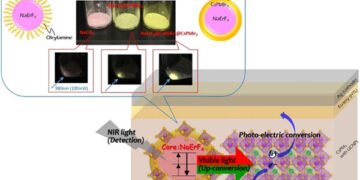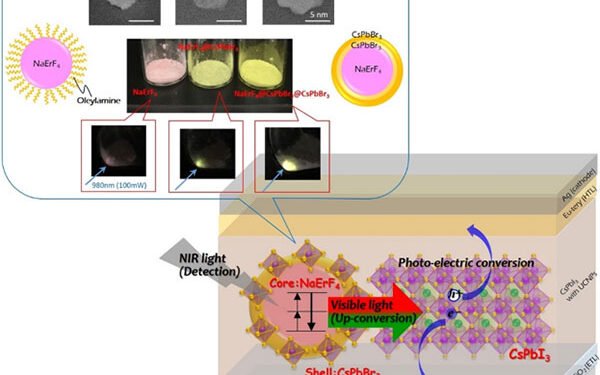As part of the JST PRESTO Strategic Basic Research Program, Associate Professor Ayumi Ishii of Teikyo University of Science and her team developed a novel near-infrared light sensor that uses materials that convert near-infrared light into visible light away.
Near infrared light is used every day in many different applications, such as infrared cameras (night vision cameras), infrared communication (wireless communication), fiber optic communication, remote control and biometric authentication. Detecting weak infrared light and improving sensitivity is important for the advancement of optical communication technology, medical research, environmental monitoring and other fields. Compound semiconductors (eg, InGaAs) with maximum absorption bands of 900 to 1700 nm are used to detect light in the near-infrared region.
However, these systems are expensive due to their complicated manufacturing process that involves the use of rare and noise-resistant metals. Also, such a semiconductor does not have visible light absorption like that obtained by using silicon (Si) and other compounds.
The research team has developed core-shell lanthanide converting nanoparticles (1) that can convert weak near-infrared light into visible light with high efficiency. In addition, by creating a near-infrared photodetector (photodiode) that combines these nanoparticles with an inorganic semiconductor material (lead halide perovskite) (2) that accepts visible light, they can convert light from the weak near-infrared energy will detect it.
Electrical signal with an efficiency of 75%. In other words, using a new, cheap and simple method of converting near infrared light – which is considered difficult to detect with high sensitivity – into this light visual that can be found in the correct range using the technology and materials that are currently available, the team achieved a great deal. improvement in the performance of near-infrared light detection.
This achievement advances the design of near-infrared light detection methods that are energy efficient using nanomaterials that convert low-level near-infrared light into high-resolution visible light. Since this technology enables weak light in the near infrared region, which is difficult to detect and using even direct sunlight, by converting it into visible light, it can make light close to receiving the effect of the sensor. efficiency of using sunlight and artificial photosynthesis of solar cells, among others.
This research (A novel near-infrared light sensor) was conducted in collaboration with Professor Tsutomu Miyasaka of Toin Yokohama University. In this research project “Development of hybrid organic-inorganic interfaces for single-photon sensing devices” in the field of “Fully controlled photons and their use for creating a new era” under the JST PRESTO strategic program basic research, and in this way to overcome the weakness of the effect of light in the air, measurement and imaging, by realizing ultra-sensitive photodetection that includes the detection of light at the level of a single photon.
By having a chemical structure of organic and inorganic materials connected at the interface, this research aims to create multifunctional and highly sensitive photodetectors that can provide information related to different aspects of light (such as wavelength and anisotropy (polarization)) for. the maximum size possible at a single photon level.
* (1) Change of surface
Upheaval is a phenomenon that combines two or more photons to emit light at a wavelength shorter than the excitation wavelength. Surface conversion can be used to convert low energy light such as near infrared light to high energy light such as visible light or ultraviolet light. Representative methods include doublet photoabsorption and triplet-triplet extinction in living organisms and various excitations of nanoparticles with rare earth ions; These processes have been studied extensively.
* (2) Lead halide perovskites
Lead halide perovskites are one of the semiconductor materials expected to replace Si as the next generation of solar cell materials. Although the material has a power conversion efficiency of more than 20%, its band gap can absorb visible light in the range below 800 nm. Perovskite films can be easily produced by coating technology, thus resulting in lower manufacturing costs and lower energy consumption than inorganic semiconductor materials.





































